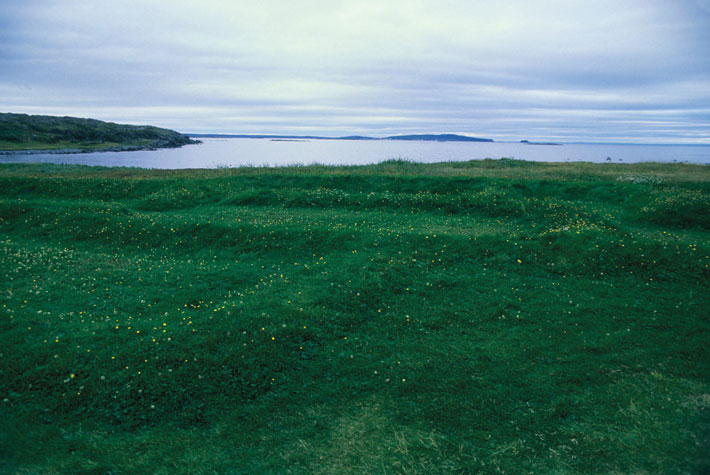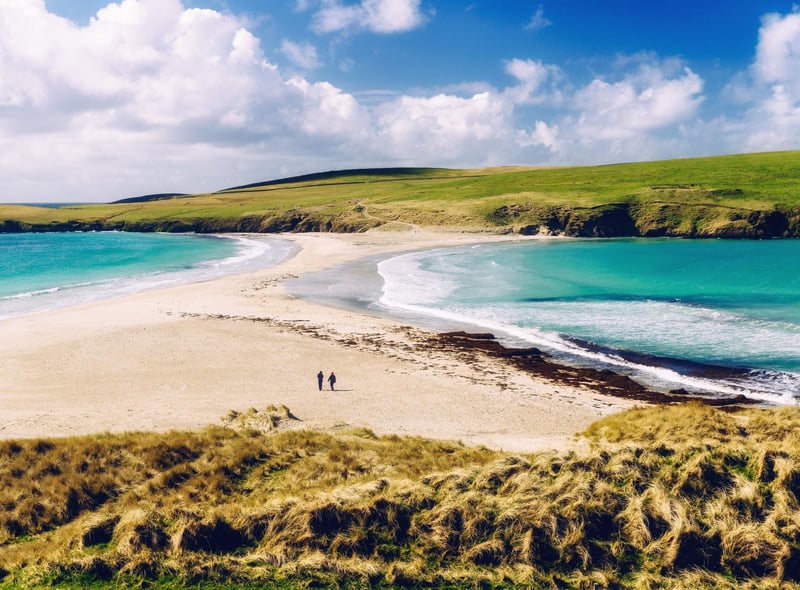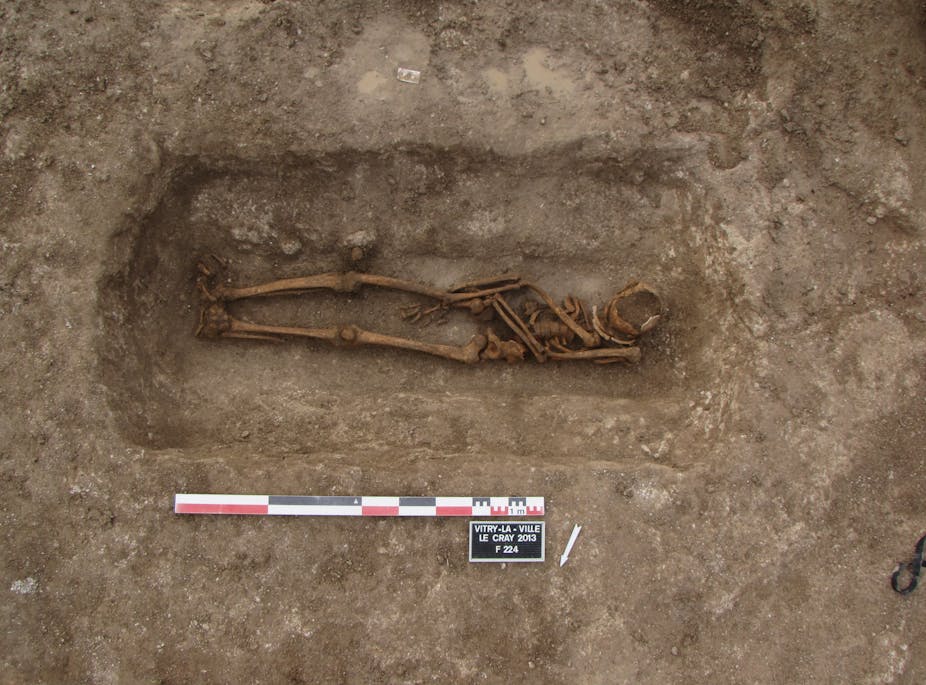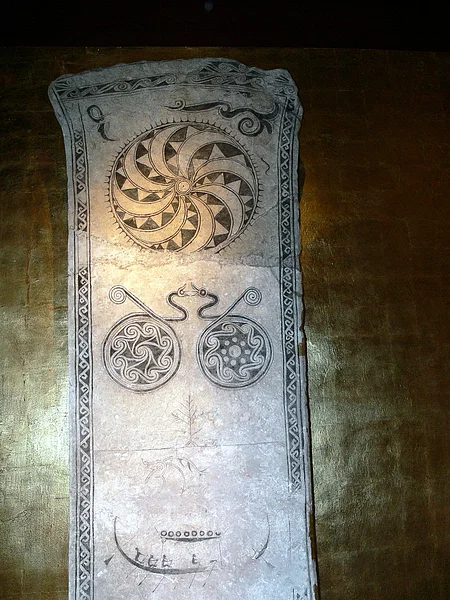
Remains of Viking settlement (Wolfgang Kaehler/Alamy Stock Photo)
When a settlement at L’Anse aux Meadows, at the northern tip of Newfoundland, was first excavated in the 1960s, the style of its buildings made clear they were constructed by Vikings who had arrived from Greenland in the tenth or eleventh century. But exactly when they made their voyage, becoming the first Europeans to cross the Atlantic Ocean, was a matter of debate. Now, a team of researchers led by Margot Kuitems of the University of Groningen has used a new method of dating wood associated with the settlement to determine precisely when the Vikings were there. The researchers took advantage of a rare solar storm that occurred in A.D. 992, significantly increasing the amount of radioactive carbon-14 absorbed by trees the next year. By identifying the tree ring containing elevated levels of radiocarbon in each of three wood samples and then counting the number of rings to the bark edge of the wood, they found that the wood all came from trees that had been felled in A.D. 1021.
Read the rest of this article...



